Dances Made to Order
Lightsey Darst looks into Dances Made to Order, a monthly showcase of dance films made across the country. The Minneapolis edition, curated by Laurie Van Wieren, includes work by Laura Holway and Ben McGinley, Kenna-Camara Cottman and Pramila Vasudevan.
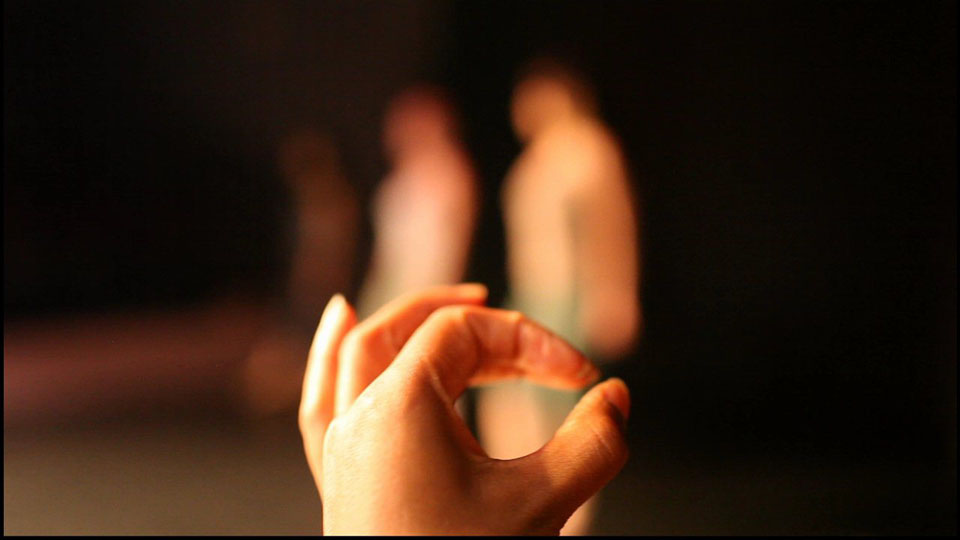
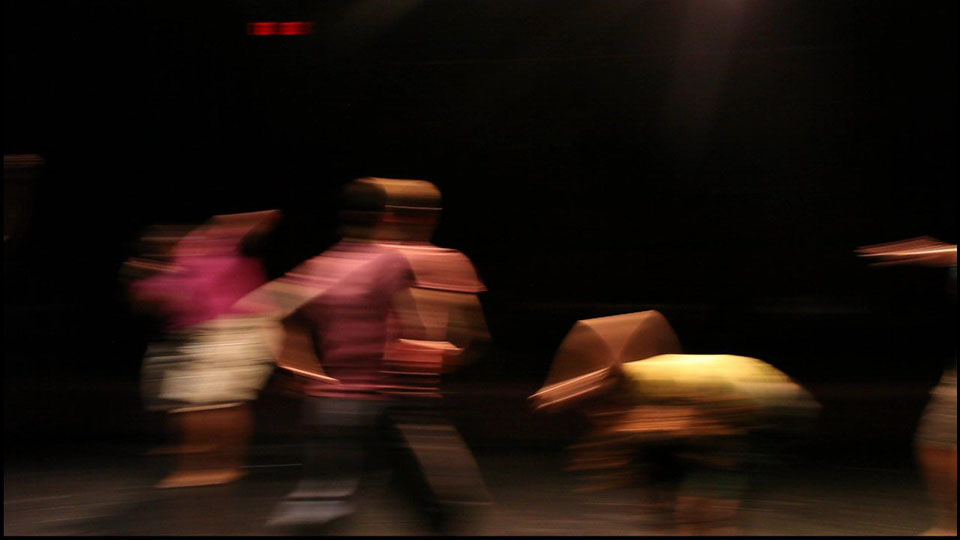
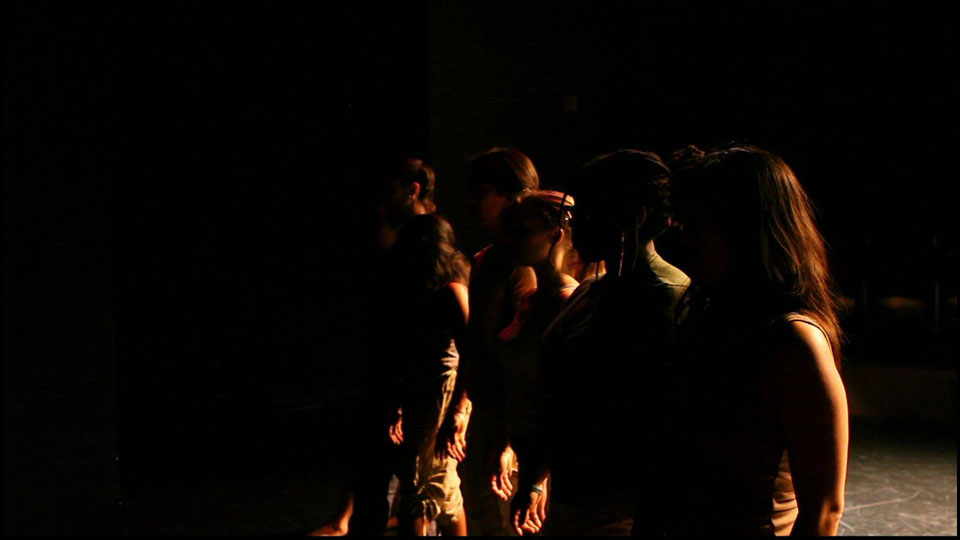
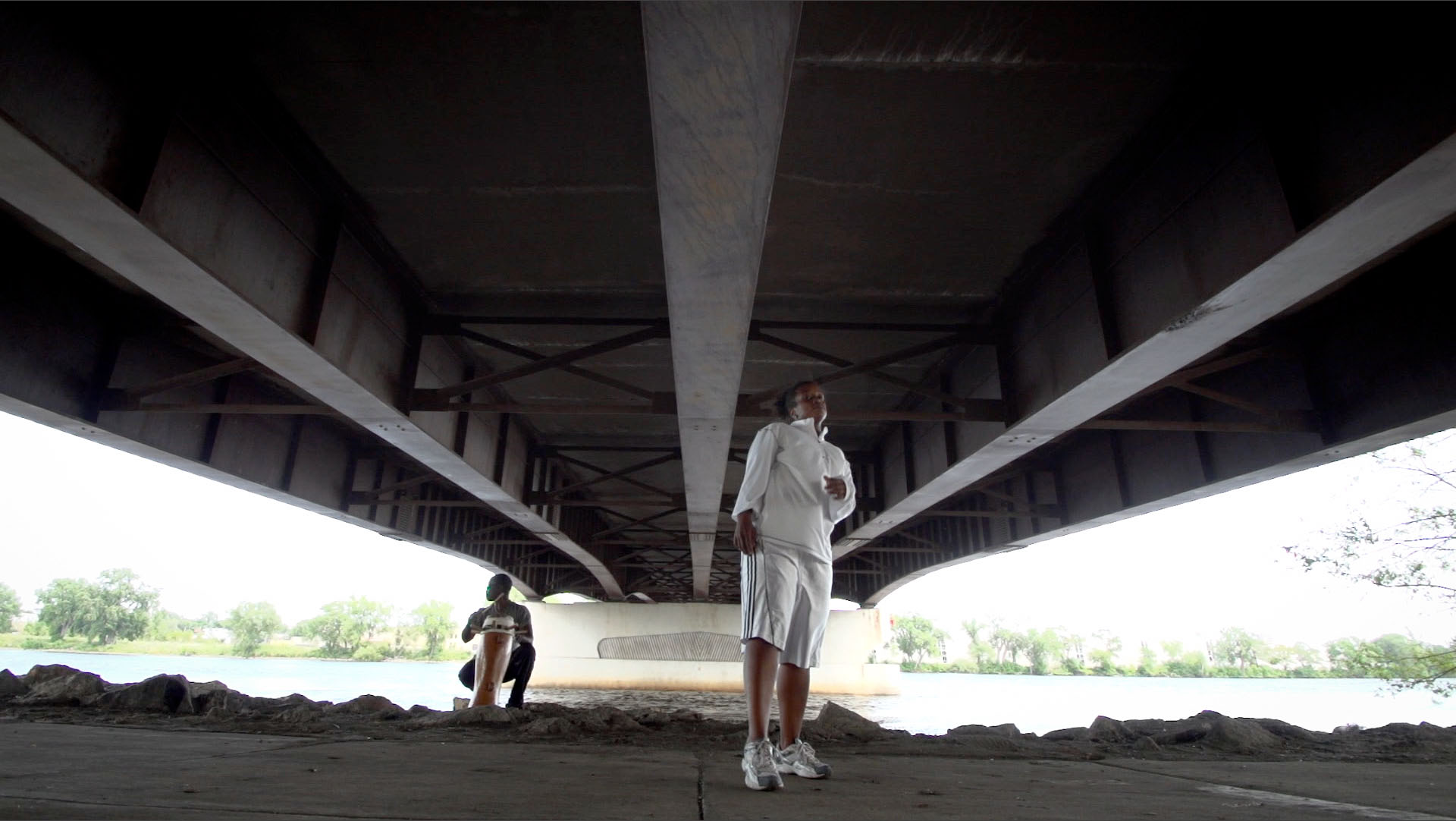
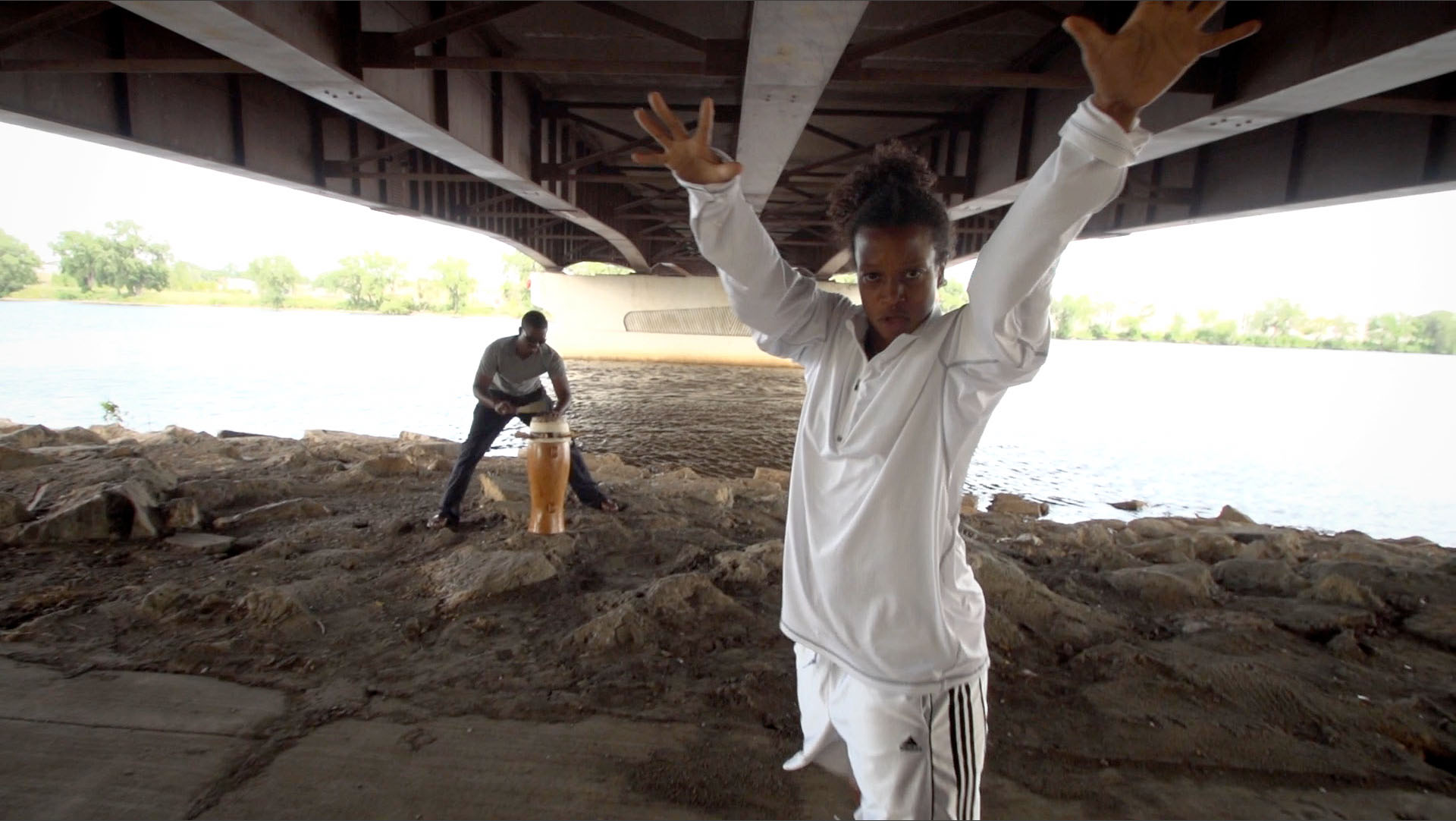
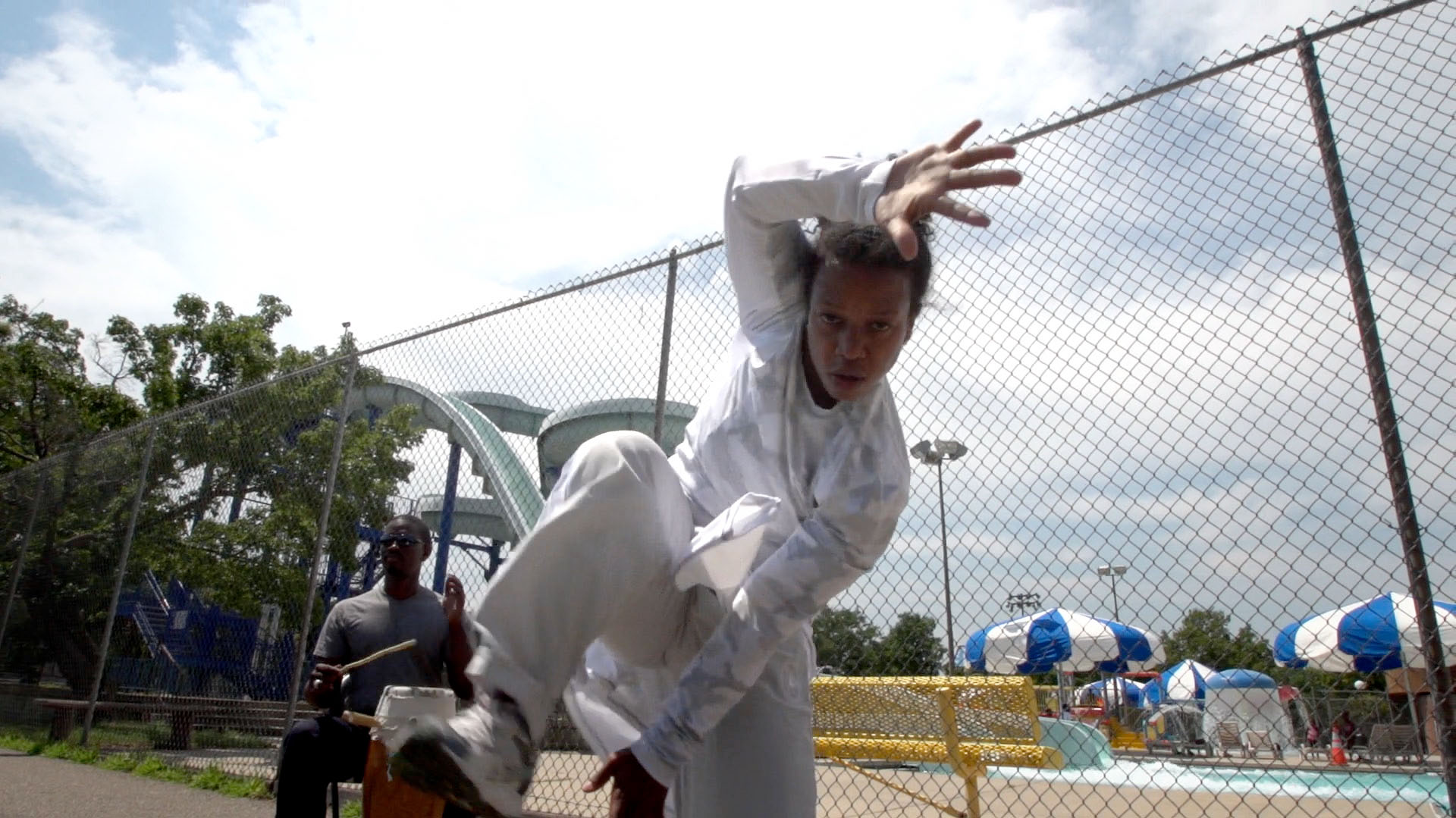
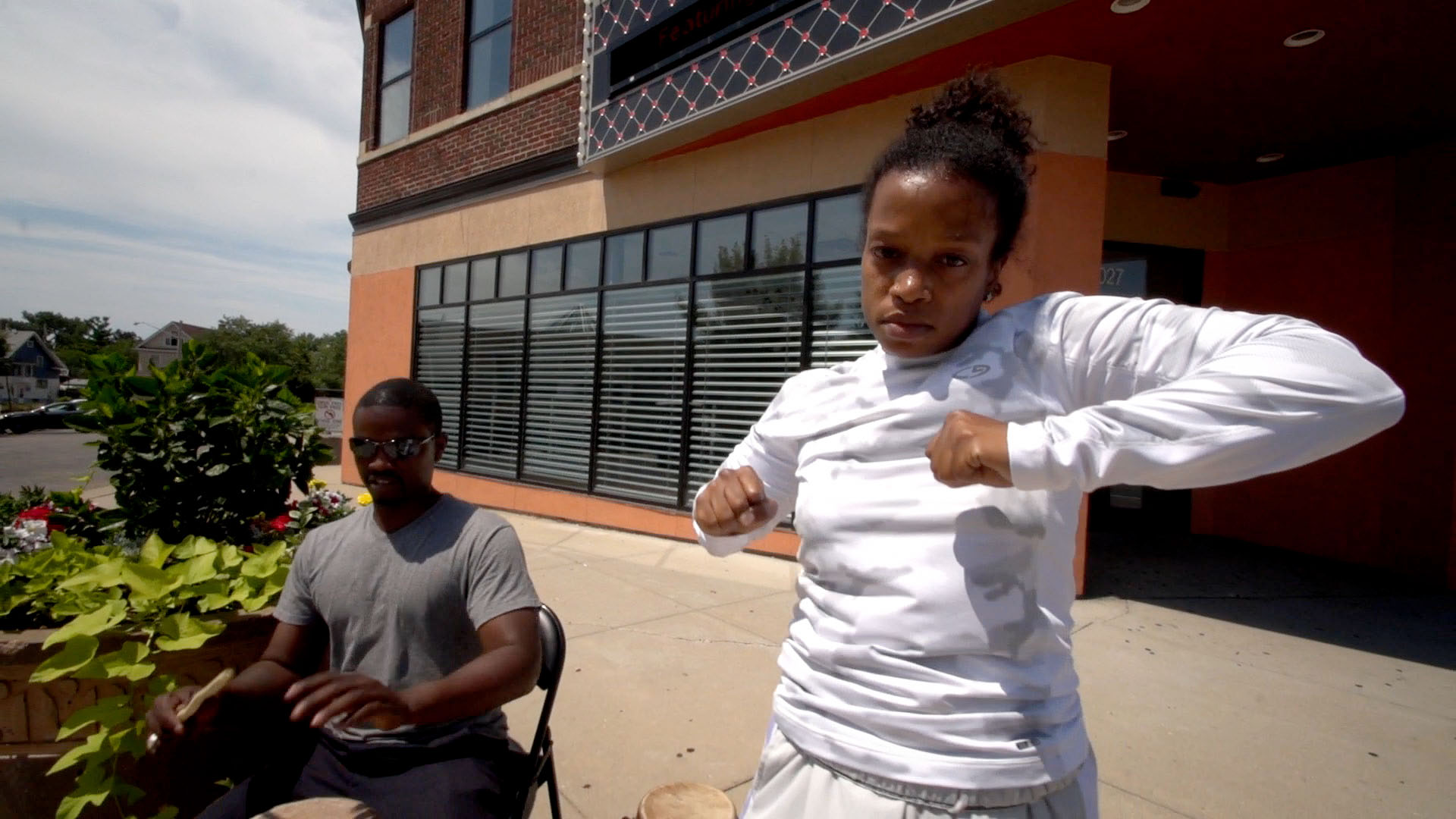
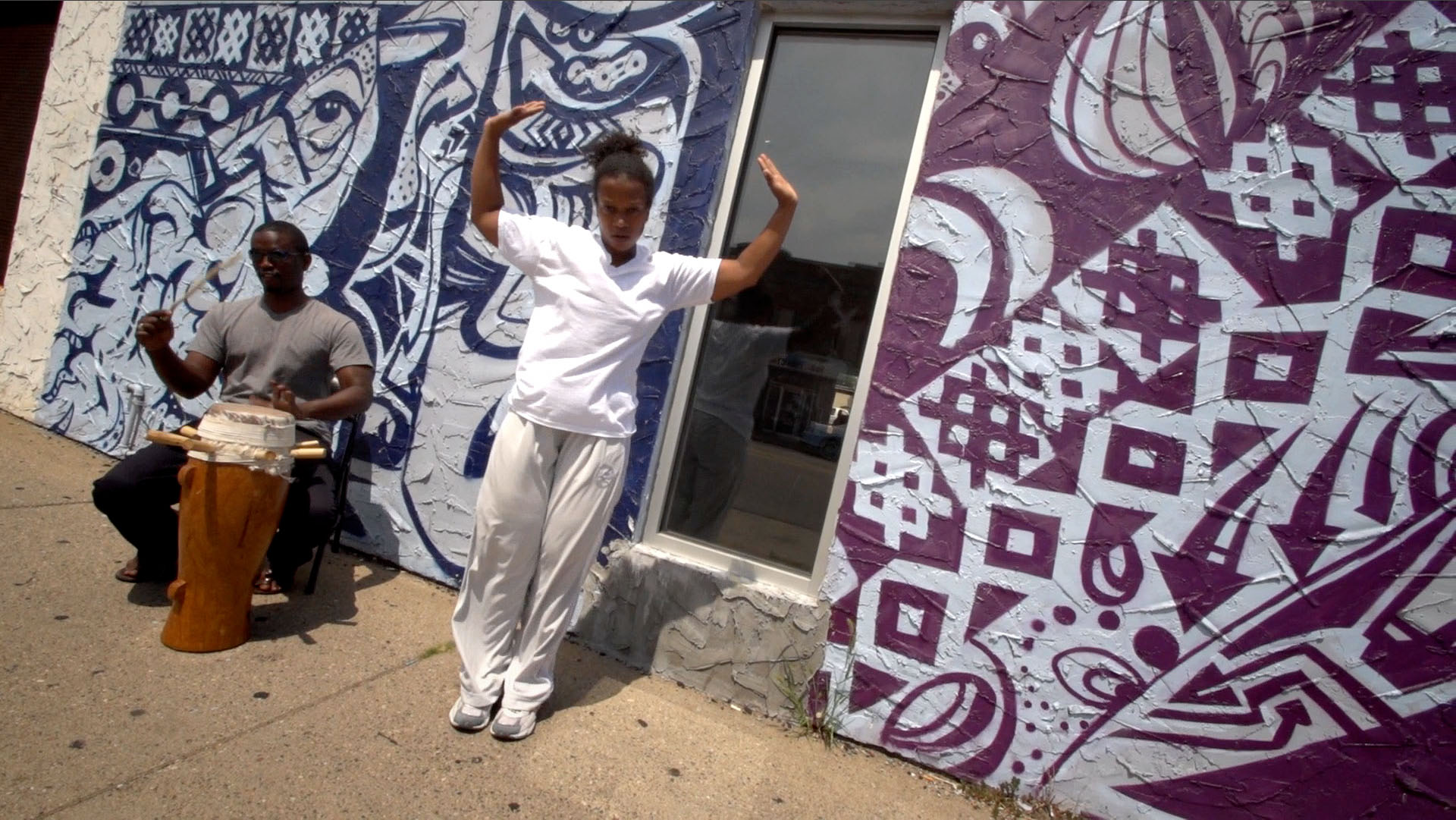
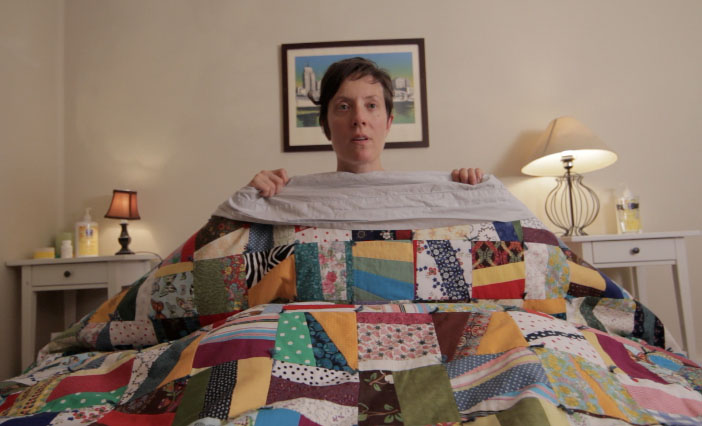
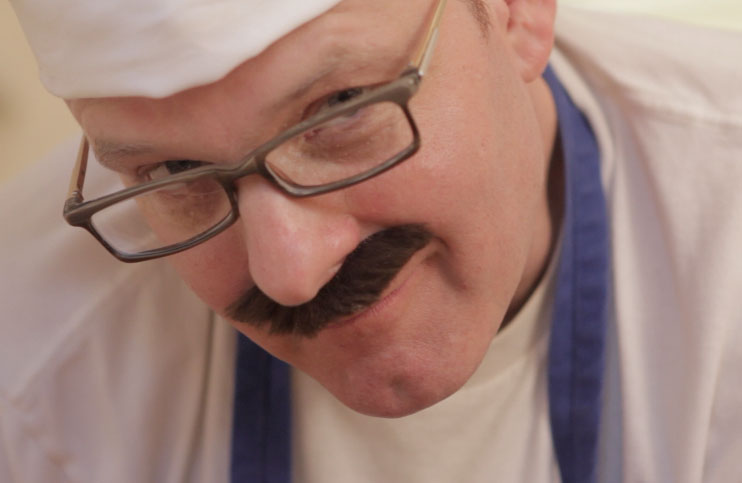
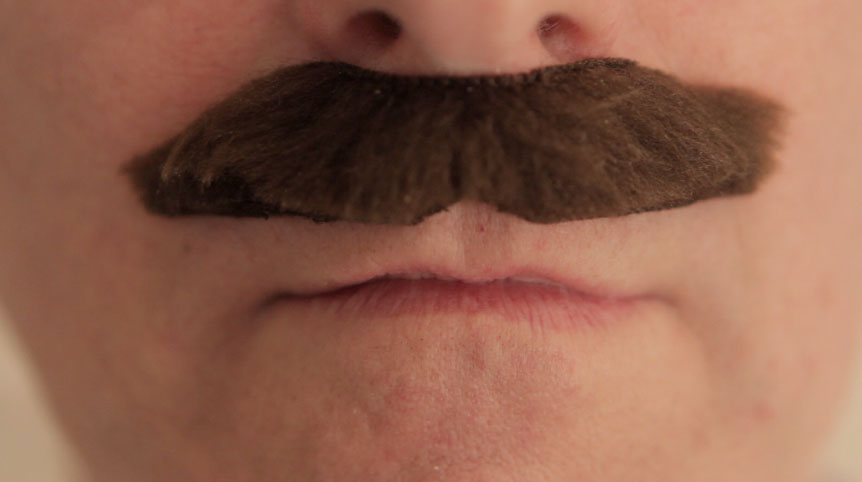
PILLSBURY HOUSE THEATER, 5:45 ON A MONDAY NIGHT. Five dancers walk in a line, shoulder to shoulder, from one side of the stage to the other. At first they have trouble sticking together, but soon they track each other easily. “You have to keep doing this and you have to go faster and faster,” choreographer Pramila Vasudevan throws in. The dancers lose each other, regain touch, make noise. “A lot faster.” They go back and forth, stumbling and shuffling, the line ragged, breaking and regrouping. Then, nearing one side, they suddenly come together and turn like fish in a school, flanks and faces in symmetry. “Better,” Vasudevan says at once, disbanding them.
She gives the dancers their next challenge: walk backwards together, staying close as they navigate an arc. How difficult it is to do something apparently simple: each dancer has a different trajectory, a different pace and degree of turn, and they all have to think about each other’s paths or partway across they’ll lose someone or turn too far. They get the outline, then try to smooth it out. “Let your heels feel your way—but don’t hurt yourselves,” Vasudevan comments. They go again. Look at their heads and everything’s easy, five pairs of eyes looking the same direction, smoothly moving in a row, but their feet trip backward in vulnerable, tentative steps, each different from the next. Dramatically lit from the side, they’re a tide at the ankles, a revolution at the shoulders, a new organism from any angle. In their inexorable/mortal, smooth/sudden motion, they remind me of Theo Jansen’s beach creatures.
But there’s one more aspect to this dance: while the dancers move a camera follows them slowly, turned on a Lazy Susan by a camerawoman whose arm has to make the same smooth half-circle as the dancers. The camera, in other words, is dancing, because Vasudevan & Co.—Aniccha Arts—are making a dance film. The occasion is Dances Made to Order, a project started by LA-based dance/film artist Kingsley Irons. DMTO occurs in one city each month, with artists selected by local curators. Audiences vote on themes that artists use to create their short dance films; the finished films can be viewed on the internet for a subscription fee.
Here in Minneapolis, Vasudevan, Laura Holway and Ben McGinley, and Kenna-Camara Cottman are the artists selected by local curator Laurie Van Wieren. Audiences choose the three themes from the following list: cooking utensils, smoke; real/false; left behind; wabi-sabi (glossed by Irons as “imperfect, impermanent beauty”); and “why would they do that?” This being Minneapolis, only the serious, abstract themes survived: wabi-sabi, real/false, and left behind. A moment’s consideration will suffice to realize that practically any film can be said to play with real/false and left behind, while wabi-sabi (stripped of its cultural context) is so vaguely defined that it could be anything. Listing the themes, Vasudevan forgot it (“Real/false, left behind, and . . . what was it?”); Holway and McGinley turned it into an on-set in-joke (“That’s the wabi-sabi,” someone said of an errant safety pin); when I asked Cottman about it, she delivered a disquisition beginning with “My aesthetic is very wabi-sabi” and winding up with a throwaway reference to raku pottery and the plummy intonation of an Oxford-educated art historian. Needless to say, the three films promise to look very different from each other.
But, given the choreographers, that’s not unexpected. I was more surprised to see that everyone looked relaxed and easy despite the constraint of a two-week production. Even editing film in their un-air-conditioned hot box apartment, Holway and McGinley had time to laugh about their work; Cottman was completely cool on deadline, having finished a day early. And Vasudevan told me she had deliberately approached DMTO as a short project, a brief and controlled immersion. She, like the others, regarded DMTO as an opportunity to explore dance film—a promising genre that, since the Dance Film Project quit running an annual festival here, has no specific local outlet.
Back in the Pillsbury House Theater, Vasudevan’s method was to create “structures for constructive outcomes,” and she gave her dancers seemingly simple instructions that kept opening into more complex images. A shoulder-ride, slowed down and walking backwards, turns from carnival trick to spiritual journey: below, Vasudevan’s thighs shake as if she’s walking through water, while Kavya Yang rides like a mermaid on a sea-swell, her coiled energy concentrated on a receding coast. Vasudevan coaches the images with directions at once urgent and obscure—“It has to be right; it can’t be performed”—that spark focus in her dancers. “Do it! please,” she exclaims, and a new pilgrimage unfolds across the theater’s zero-space.
TUESDAY AFTERNOON, I CATCH UP with Laura Holway and Ben McGinley on the corner of 24th and Hennepin, shooting Charles Campbell and Megan Mayer against a background of Uptown traffic. Holway and McGinley are a couple; she has flaxen hair and he wears Clark Kent frames, and they are off-kilter cute. The shoot matches their aesthetic: Campbell and Mayer are slow-burn, deadpan funny as a couple of nobodies who discover each other’s (harmless) secret identities; there’s a cape and a fake moustache, and everything ends with apple pie. Campbell asks a question about the pie. “You’re not going to be so much making a pie as throwing flour around,” McGinley clarifies. “My mother made a very good pie crust,” Campbell muses.
This isn’t to say that Holway and McGinley’s film is blithe kitsch, however. Everybody involved is whip-smart and well-educated, and the shoot abounds with movie jokes and meta-chatter. Tolerating a close-up of her lower legs in motion and apart, Mayer cracks, “It’s kind of like being at the gynecologist.” Holway considers what they’re up to: “It’s definitely a moment when you think about what is dance, and are people going to be disappointed if there aren’t any jetes.” What’s dance here might be the language of gesture, nearly pantomime, that characterizes these people and tells their stories; it might also include the playful movement of McGinley’s camera, rife with references to Hitchcock, Jaws, and horror films. There’s another element that removes Holway and McGinley from the realm of Princess Kay carved in butter: serious craft. These two know what they’re doing.
A guy comes up to bother them, asking what they’re doing: “Can you shed any light on this?” They explain that it’s a dance film; this is clearly a category the guy has never heard of. “Is it Salesman, Death of a Salesman dance?” he asks, perhaps inspired by Campbell’s short-sleeved button-down. Then he asks if they’re amateurs. Mayer cracks her knuckles above her head. “No, we’re professionals — can’t you tell?”
McGinley goes out to shoot traffic for background. Holway consults her storyboard to see if they’ve left anything out.
ANOTHER DAY, ANOTHER DANCE FILM. This time I’m following Kenna-Camara Cottman around Minneapolis’s Northside. It’s starting to seem normal that dancers and filmmakers should enliven the cityscape, so when Cottman and her drummer, Mousse, let loose with a hail of beats and steps outside the Capri Theater, I’m unfazed. So is everyone else. In fact, after a minute the Capri’s door opens, and a man comes dancing out like every day is a musical. Turn out Cottman knows him; it’s actor/singer T. Mychael Rambo. She stops to chat. Later, I ask Cottman, whose work often involves interaction, about the lack of audience connection in dance film. She doesn’t mind at all. “I’m totally satisfied right now,” she says. “This could be my selfish art.” Perhaps the interaction in the filming process fills that audience gap for her. Her whole shoot, she tells me later, is like this—people walking into the frame, talking, laughing, visiting.
The dance, though, is no laughing matter: African- and hip-hop- derived moves delivered with Cottman’s trademark buoyancy (which somehow always puts me in mind of the preternatural motion of toddlers—that sort of off-balance, gravity-free rebound), toughened up with macho posturing she took from Senegalese wrestling (a little smackdown, a little faux-jump rope, a little pit-sniff). Cottman gives the face to match, too—an expression so intimidating I’m surprised Kevin Obsatz, her filming collaborator, doesn’t turn to stone when he goes for a close-up. She’s dressed all in shades of white, long sleeves, long pants, like a desert wanderer, and on this hot day she doesn’t seek shade. Cottman tells me she’s investigating family conflict, using a sports metaphor. The mobile crime lab goes by in the background.
Fifteen minutes and she’s done; time to move on to a nearby water park. No one stirs as Cottman and her drummer set up. Cottman does the same dance; the lifeguard lolls in her red bikini. I inch towards them, drawn by the drum. Closer up, it’s less sound than feeling, and the drum’s surface, constantly in motion, never in focus, mesmerizes.
Someone flies down the slide behind Cottman and into the water. He pops out and turns out to be not a kid but a tiny, perfectly-formed man in very long madras shorts. He struts by the camera, gives it a look, and heads back to the ladder up the slide.
______________________________________________________
Related links and information:
The Minneapolis edition of Dances Made to Order, a selection of new dance film works curated by Laurie Van Wieren, premiered online this week. For a fee of $10, you can watch all three locally produced dance films: Tuesday, by Laura Holway and Ben McGinley, featuring Charles Campbell and Megan Mayer; Northside Throwdown, by Kenna-Camara Cottman, and Regression, by Pramila Vasudevan, featuring the dancers of Aniccha Arts. For $55, you can subscribe to the entire season of 33 original short dance films, released monthly, three at a time. Each month’s selection of films is curated and produced by local artists and arts organizations from 11 cities across the country to highlight their region’s distinct dance culture. The cities for 2012 include: Los Angeles, Salt Lake City, New York, Atlanta, Chicago, Boston, Philadelphia, Minneapolis, San Francisco, New Orleans and Austin.
Find information about the program and sign up to see the Minneapolis edition of dance films just released on http://dancesmadetoorder.com/.
______________________________________________________
About the author: Originally from Tallahassee, Lightsey Darst is a poet, dance writer, and adjunct instructor at various Twin Cities colleges. Her manuscript Find the Girl was recently published by Coffee House; she has also been awarded a 2007 NEA Fellowship.